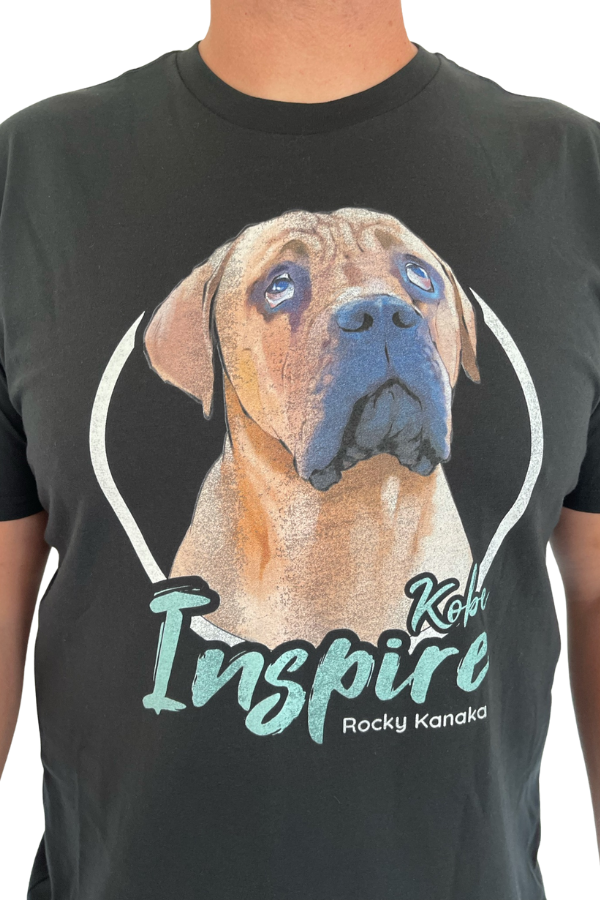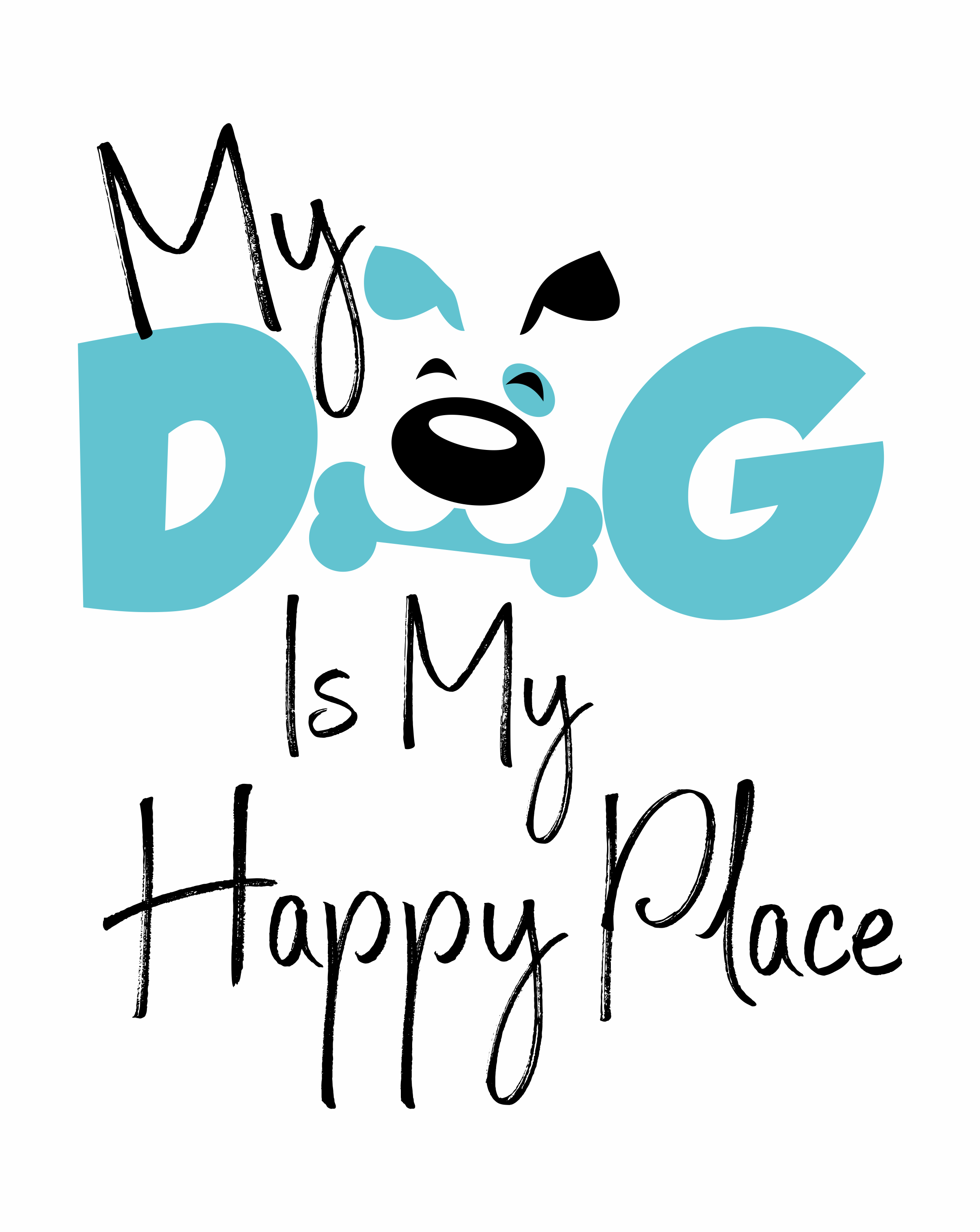Heterochromia In Dogs Gives Them Mesmerizing Multi-Colored Eyes [With Photos]
When a dog has two different colored eyes, this usually means they have something called heterochromia. Most dogs have genetic heterochromia and inherit their unique eye coloring from their parents, though some puppies born with this condition may also acquire a mutation in utero. While an injury or illness can cause acquired heterochromia later in life, most dogs with heterochromia have different-colored eyes from birth with no health problems.
Whether you find heterochromia in dogs mesmerizing and just want to learn more, or you’re wondering whether this eye pigment condition could affect your pup’s health, you’ve come to the right place. Let’s dive into what heterochromia is, what causes it, common breeds with this condition, and fun facts about dogs with different colored eyes!
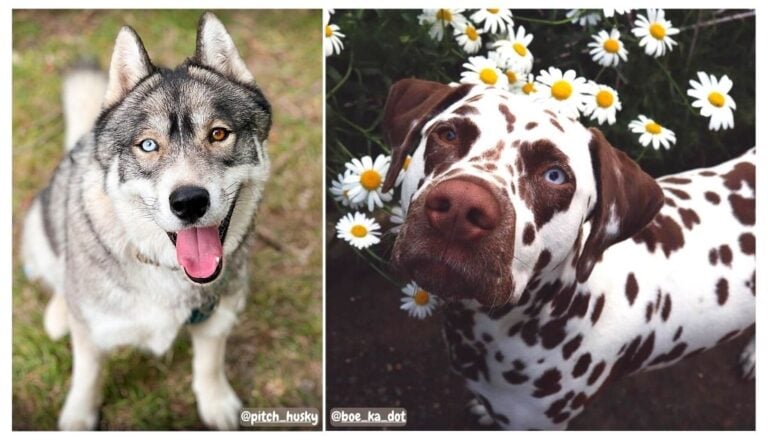
What Causes Heterochromia in Dogs?
Heterochromia is usually the result of a harmless genetic mutation that affects only the pigment of the eye. Most puppies inherit this mutation from their parents and don’t have any ill effects as a result. This is called inherited heterochromia.
If your dog is not born with heterochromia but their eyes begin to change colors later in life, this could be a sign of acquired heterochromia. Acquired heterochromia occurs when a dog experiences an eye injury, or acquires one of a handful of health conditions that may cause damage and pigment decay. A change in your dog’s eye color is a reason to make an immediate appointment with your vet.
Spiritual Beliefs Tied to Heterochromia
Beyond the scientific causes of heterochromia, there are also spiritual and cultural beliefs about dogs—and other animals—with different colored eyes. Some Indigenous North American people believe that a dog with heterochromia can see both the spiritual and physical realms. Considered spiritually gifted, dogs with heterochromia may also be regarded as a symbol of good luck and intuition.
Types of Heterochromia in Dogs
Heterochromia eyes in dogs can appear in three different “types.”
1. Complete heterochromia
Complete heterochromia (heterochromia iridum) in dogs describes two completely different solid-colored eyes. For example, one eye may be a blue color while the other is brown.
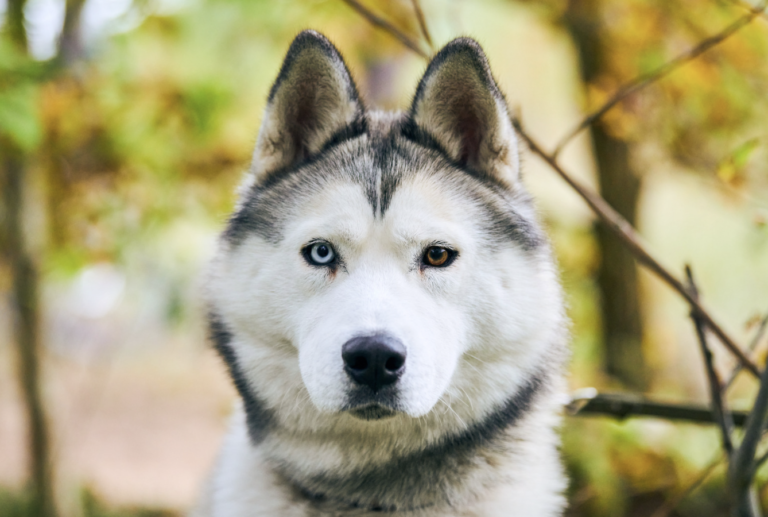
2. Sectoral heterochromia
Sectoral heterochromia (heterochromia iridis) in dogs describes an iris with one section of a secondary color. For example, a dog with sectoral heterochromia might have brown eyes with a single blue “pie wedge” on one side.
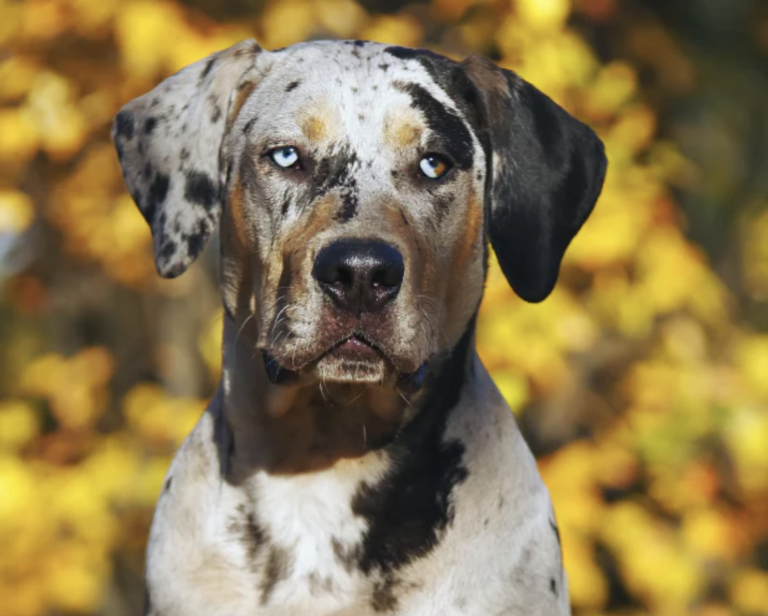
3. Central heterochromia
Central heterochromia describes an iris with a solid outer color and a secondary color around the iris. The secondary color might look like a ring around the pupil, or like small spikes of color jutting outward from the pupil. Central heterochromia in dogs can be a little more difficult to detect.
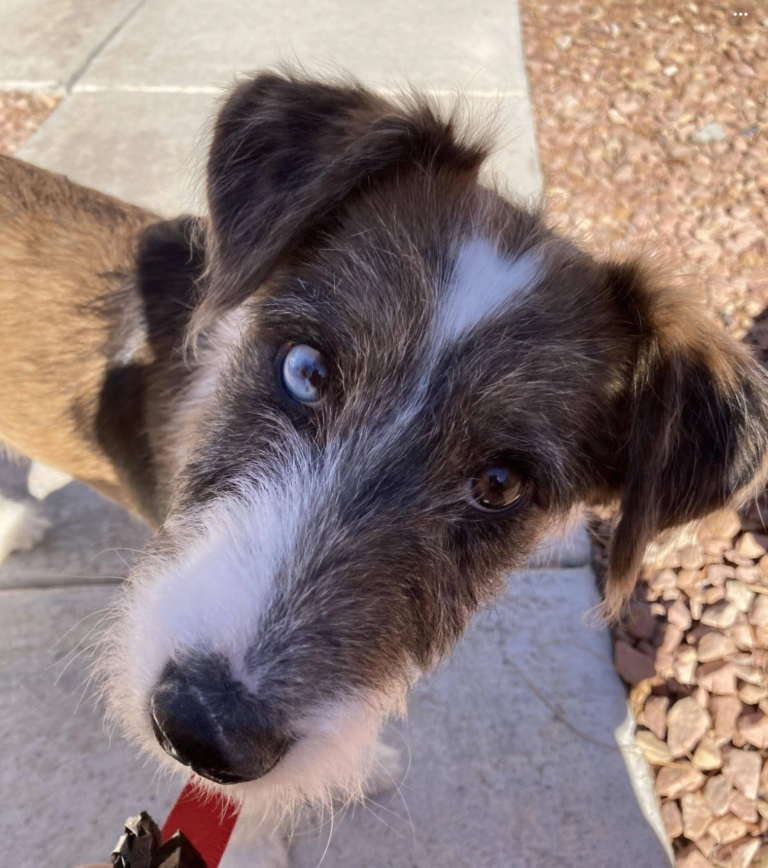
7 Common Dog Breeds with Heterochromia
Any dog breed can develop heterochromia under the right circumstances, but there are some dog breeds for which this trait is more common. Heterochromia can affect both or just one eye, but most dogs with this mutation have some mixture of blue and brown or green and brown eyes. Here are seven of the breeds you’ll see most often with different colored eyes.
1. Australian Shepherd
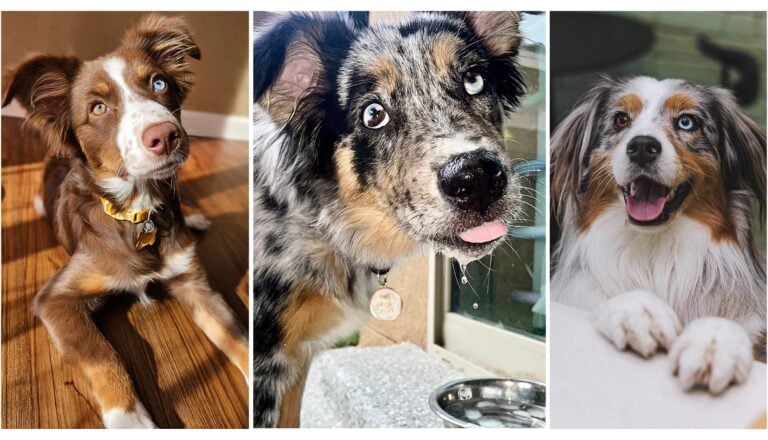
Yuumi (left) and Sedona (right) have complete heterochromia, and both have two different solid-colored eyes. Nala (center) has sectoral heterochromia, which means she has multiple eye colors in her irises. Some sectoral heterochromia in dogs only affects one eye, but Nala has this beautiful mutation in both eyes.
Other than the Siberian Husky—which we’ll cover below—the Australian Shepherd is perhaps the most well-known dog breed that commonly has heterochromia. Australian Shepherds are often born with heterochromia, and inherit it from their parents who inherited it from their parents! The heterochromia mutation is now built into the Australian Shepherd look, and has become a defining feature of the breed.
2. Border Collie
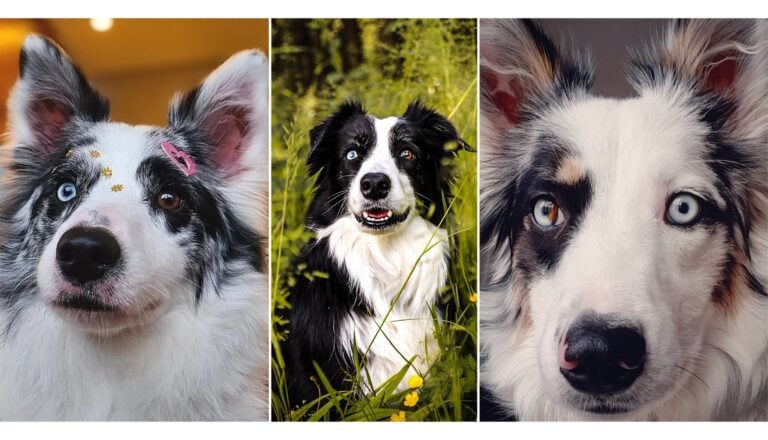
Heterochromia in Border Collies is common but not a breed standard, and though you’ll see many dogs of this breed with different colored eyes, you’ll see just as many with two brown or two blue eyes. Capitu (left) and Zonda (center) have complete heterochromia, but beautiful Aurora (right) has sectoral heterochromia.
3. Catahoula Leopard Dog
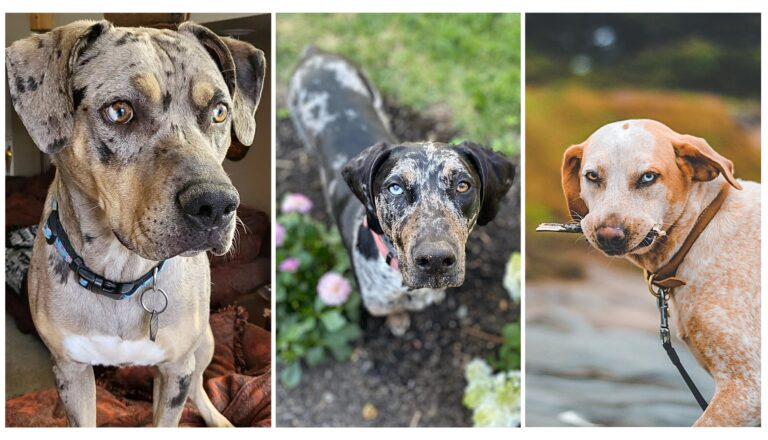
Catahoula Leopard Dogs are strikingly beautiful and come in a rainbow of colors and hues. To add to their stunning good looks, Catahoulas also commonly have heterochromia. Rio (left) has sectoral heterochromia and Dakota (center) and Miley (right) have complete heterochromia.
4. Dachshund
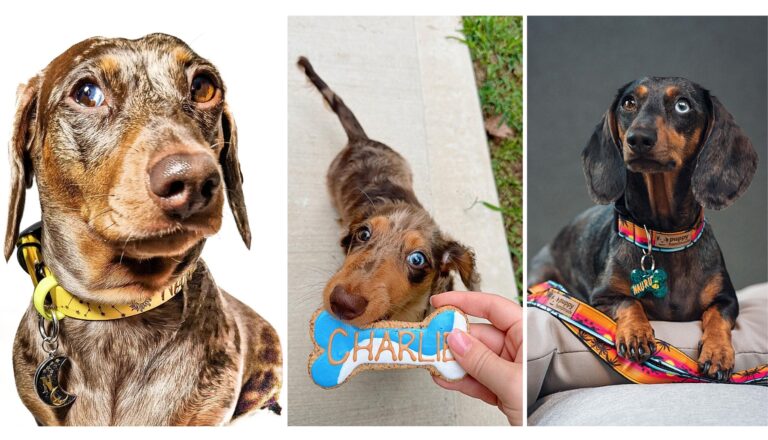
Though not exceptionally common, Dachshunds are sometimes known to have heterochromia! These adorable pups are an example of three different kinds of heterochromia. Nova (left) has sectoral heterochromia, Charlie (center) has a combination of complete and central heterochromia, and Nauru (right) has complete heterochromia.
5. Dalmatian
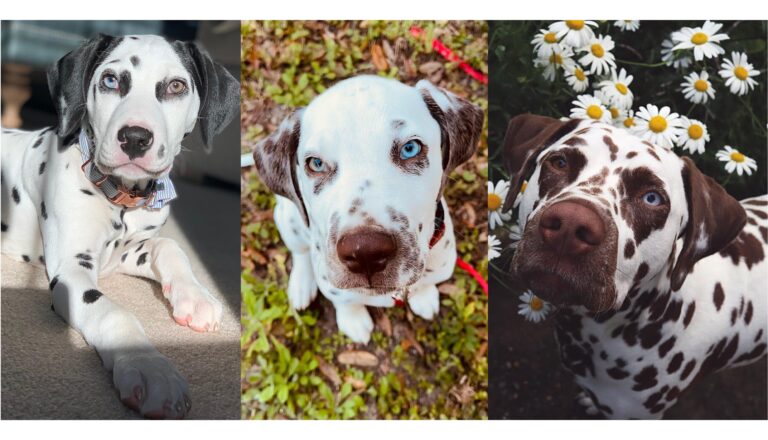
Rip (left), Dallas (center), and Boe (right) are all Dalmatians with complete heterochromia. This means they all have two different but solid-colored eyes. While heterochromia is considered harmless in most dogs, there is some link to blindness and deafness for Dalmatians who may develop heterochromia as the result of a different genetic mutation than other breeds—AKA the piebald gene.
6. “Pitbull” Type Dogs
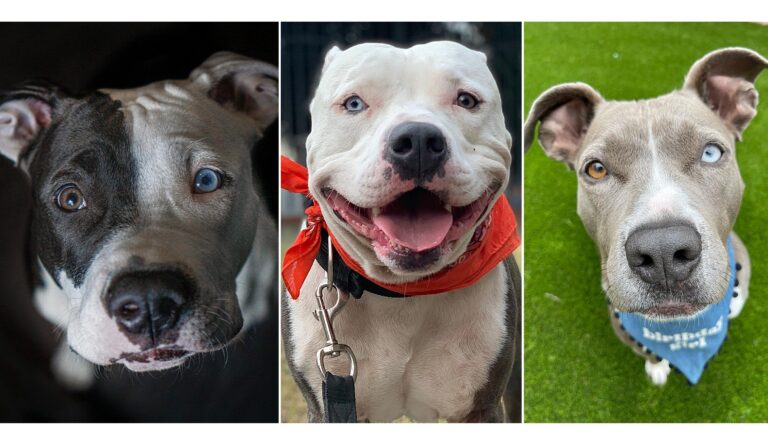
Heterochromia is common in a number of “Pitbull-type” dog breeds but is most frequently seen in the American Staffordshire Terrier (like Willow, left) and the American Pitbull Terrier (like Thor, center). Willow and Thor have complete heterochromia, but Millie (right) has two kinds of heterochromia: complete and central heterochromia. Millie’s eyes are two different colors, but her left eye—the blue one—also has a ring of deeper blue around the pupil.
7. Siberian Husky
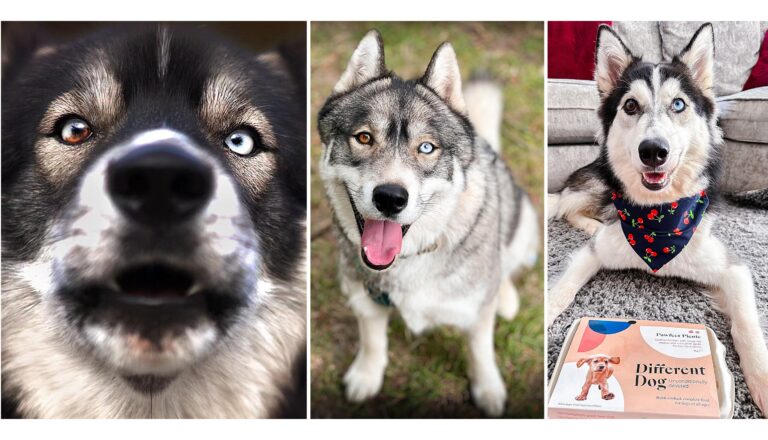
Siberian Huskies are the dog breed most well-known for having naturally occurring heterochromia and are also the most popular dogs with different colored eyes. Many people interested in getting a Husky are also interested in their dog’s eyes being different colors. Here, you can see Yuma (left) who has sectoral heterochromia, and Pitch (center) and Laska (right) who have complete heterochromia.
Heterochromia FAQ
Take a quick look at a few more facts about heterochromia in dogs! We’re answering the internet’s pressing questions about dogs with multicolored eyes.
How rare is heterochromia in dogs?
Heterochromia is relatively common in dogs, especially in certain breeds like the Australian Shepherd and the Siberian Husky.
How rare is sectoral heterochromia in dogs?
Sectoral heterochromia (or heterochromia iridis) in dogs is less rare than complete heterochromia.
Does heterochromia affect vision in dogs?
Genetic (congenital) heterochromia doesn’t affect vision, but some dogs with acquired heterochromia may experience vision issues related to the loss of pigment in their eyes. Most commonly, acquired heterochromia is a symptom of a health problem rather than the cause of a health problem.
Can dogs develop heterochromia later in life?
Yes, if a dog is injured or develops a health problem that affects the eyes, they may experience pigment loss/heterochromia later in life. This is not “natural” and is always caused by an underlying health issue.
Related Articles:
- Luxated Lens in Dogs: Treatment Options & Pricing
- Entropion in Dogs: Causes, Symptoms and Treatment
- 7 Serious Causes of Cloudy Eyes in Dogs
- Hydrocephalus in Dogs
- Cataracts in Dogs: Everything You Need to Know, from Prevention to Treatment


